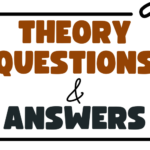The website has the complete lesson note for all the subjects in secondary school but this piece showcases the SS2 Commerce Lesson Note on Types of Organizational Structure. You can use the website search button to filter out the subject of interest to you.
CLICK HERE to download the complete Document: DOWNLOAD HERE
TYPES OF ORGANISATIONAL STRUCTURE
The various types of organisational structure are as follows;
- Line Organisation.
- Functional Organisation.
- Line and staff organisation.
- Committee
LINE ORGANIZATION
This refers to the direct working relationship between the subordinates and superiors in which the line of authority and responsibilities flow from the top executives to the lowest subordinates. This type of structure is more suitable and applicable to small or medium sized business.
Line Organisation
Advantages of line organisation
- It gives a clear cut identification of duties, responsibilities and division of labour.
- It is simple and easily understood by the employees and organisation.
- It is good for small organisations where specialisation is not very important.
- Decision making at all levels is made easy and simple.
- Discipline is always maintained.
- It is based on the principles of unity of command and scalar chain.
Disadvantages of line organisation
- Lack of specialisation at the supervisory level.
- It is autocratic.
- There may be much pressure and demand on the top managers.
- A manager may be responsible for too many things.
- Functional Organisation
This is a structure where certain functional relationships that exist between specialist or functional managers and line managers, example finance manager has functional responsibilities for all activities, relating to finance and accounting in all the departments of the business, even though each employee has his/her own boss in their respective departments.
Advantages of Functional organisation
- It promotes division of labour and therefore promotes efficiency.
- This system is flexible and conducive for growth and expansion.
- Experts are allowed to make use of their expertise for the betterment of the company.
- There are several supervisors which make for better co-ordination and effectiveness
Disadvantages of functional Organisation
- Authority can overlap
- There is lack of fixed line of responsibility.
- Confusion can occur because there are too many experts and bosses.
- There may be lack of effective control.
- It is not easy to apportion blames for mistakes.
LINE AND STAFF ORGANIZATION
This is the combination of line or direct executives and the specialists auxiliary services (functional), whereby a line organization engages experts to advise the line managers in the performance of their duties. The line executives carry out the actual work required for the operation of the enterprise, whereas staff are specialists who give advice to the line managers.
Advantages of Line and Staff Organisation
Click on the Downloadable Button to get the FULL NOTE




